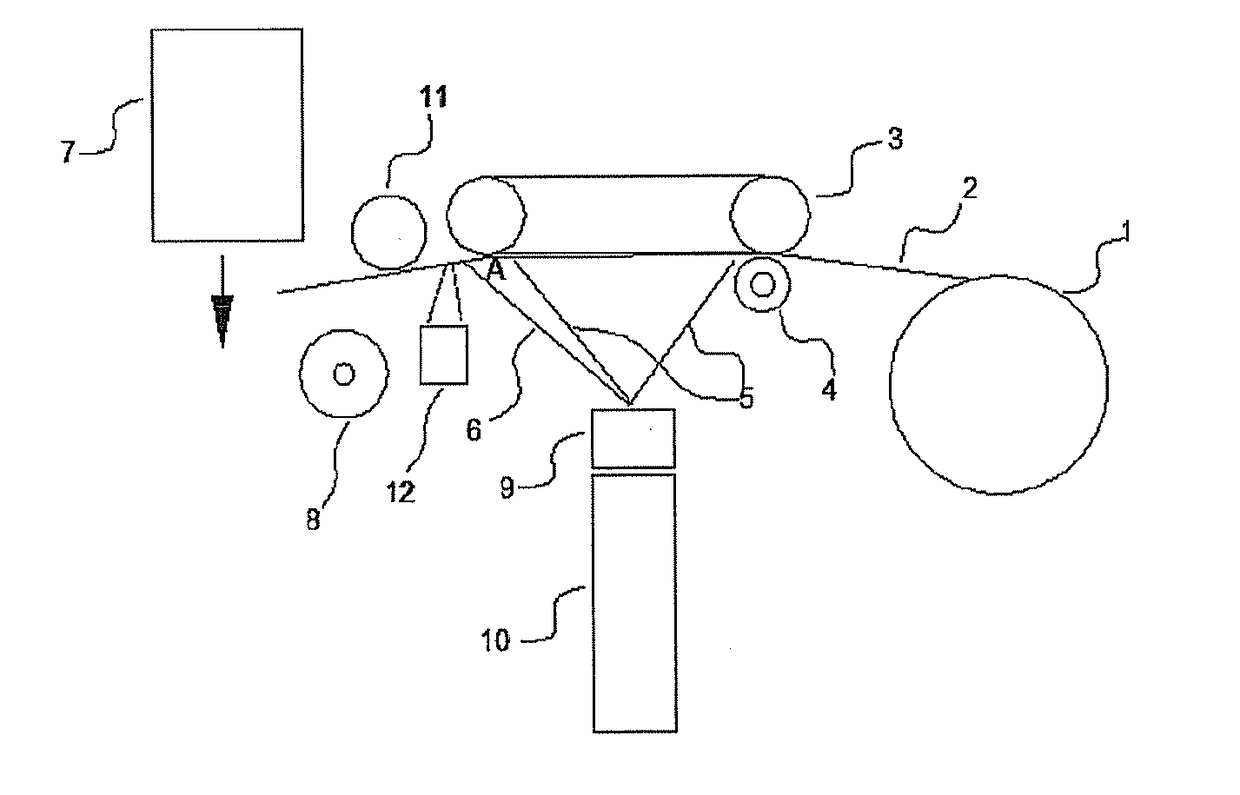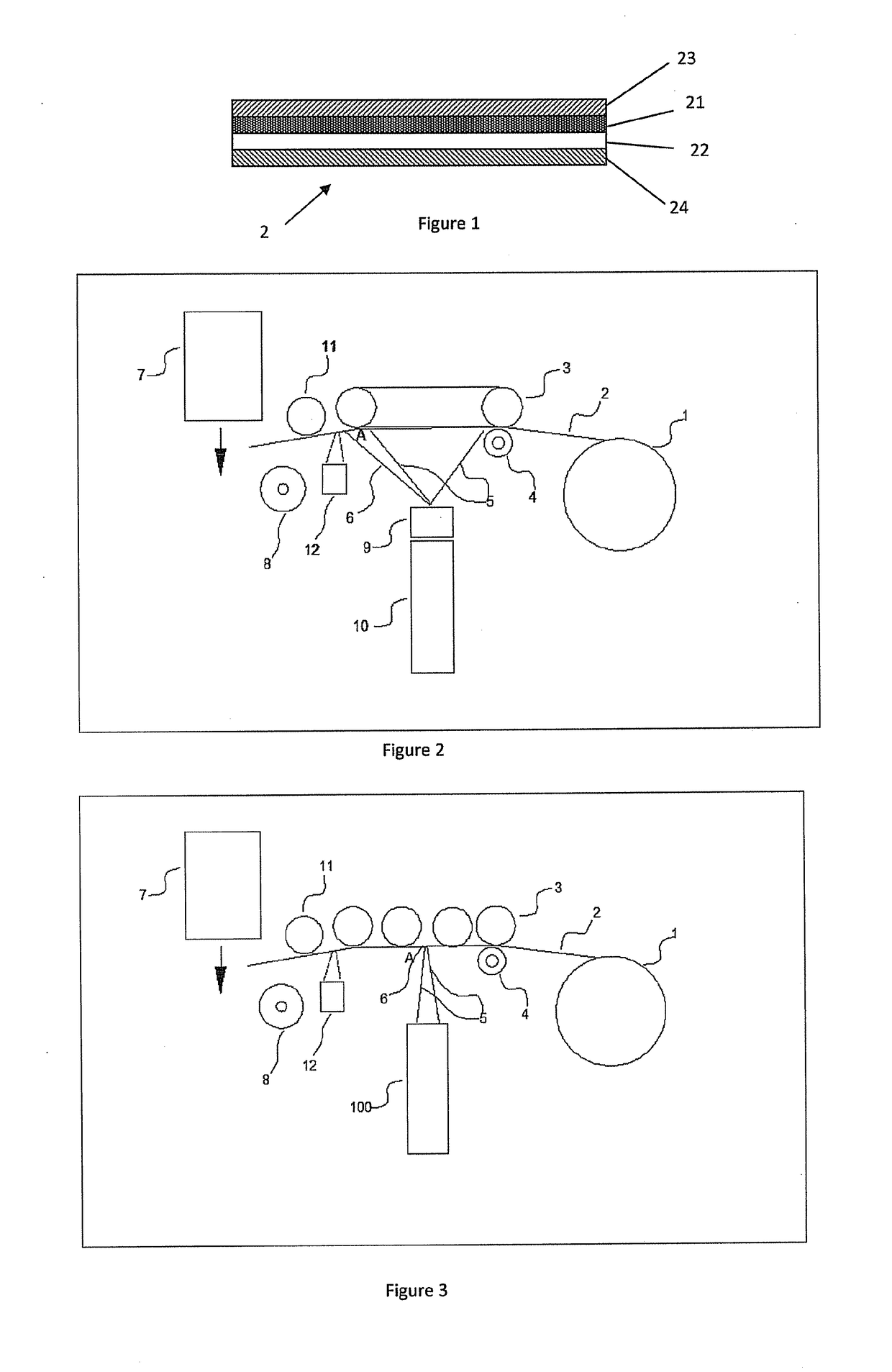Linerless label imaging and cutting
- Summary
- Abstract
- Description
- Claims
- Application Information
AI Technical Summary
Benefits of technology
Problems solved by technology
Method used
Image
Examples
Embodiment Construction
[0034]In order that the invention may be more clearly understood an embodiment thereof will now be described, by way of example only, with reference to the accompanying drawings, of which:
[0035]FIG. 1 is a schematic illustration of a linerless label substrate for use in the present invention;
[0036]FIG. 2 is a schematic illustration of a label printing and cutting apparatus for a linerless label substrate according to the present invention; and
[0037]FIG. 32 is a schematic illustration of an alternative embodiment of a label printing and cutting apparatus for a linerless label substrate according to the present invention.
[0038]The present invention discloses a method and apparatus for imaging, cutting and applying a label to a package or product. In particular the present invention discloses a method and apparatus for imaging, cutting and applying a linerless label substrate 2 as shown in FIG. 1. The label substrate 2 comprises a base layer 21, a colour change layer 22, an adhesive la...
PUM
 Login to View More
Login to View More Abstract
Description
Claims
Application Information
 Login to View More
Login to View More - R&D
- Intellectual Property
- Life Sciences
- Materials
- Tech Scout
- Unparalleled Data Quality
- Higher Quality Content
- 60% Fewer Hallucinations
Browse by: Latest US Patents, China's latest patents, Technical Efficacy Thesaurus, Application Domain, Technology Topic, Popular Technical Reports.
© 2025 PatSnap. All rights reserved.Legal|Privacy policy|Modern Slavery Act Transparency Statement|Sitemap|About US| Contact US: help@patsnap.com


